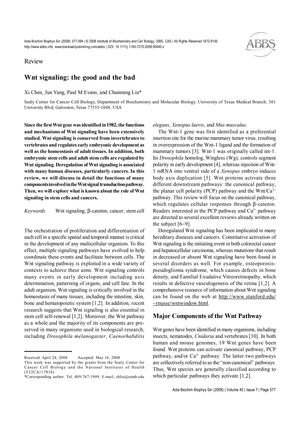Wnt Signaling: The Good and the Bad
July 2008
in “
Acta Biochimica et Biophysica Sinica
”

TLDR Wnt signaling is important for development and cell regulation but can cause diseases like cancer when not working properly.
The 2008 review by Xi Chen et al. explored the complex nature of Wnt signaling, emphasizing its crucial role in embryonic development, adult tissue homeostasis, and stem cell regulation, as well as its involvement in various diseases, especially cancers. The canonical Wnt pathway, which involves the stabilization and nuclear activity of ß-catenin to activate gene expression, was the primary focus. The review detailed the pathway's components and regulatory mechanisms, including the roles of Wnt proteins, receptors, and extracellular antagonists. It also discussed the pathway's significance in stem cell function across different tissues, such as hematopoietic, skin, and neural stem cells, and its critical involvement in hair follicle growth and regeneration. Furthermore, the review highlighted the association between Wnt signaling dysregulation and cancer, with specific examples in prostate, liver, and skin cancers, and the potential of Wnt signaling as a target for novel cancer diagnosis and treatment strategies.








